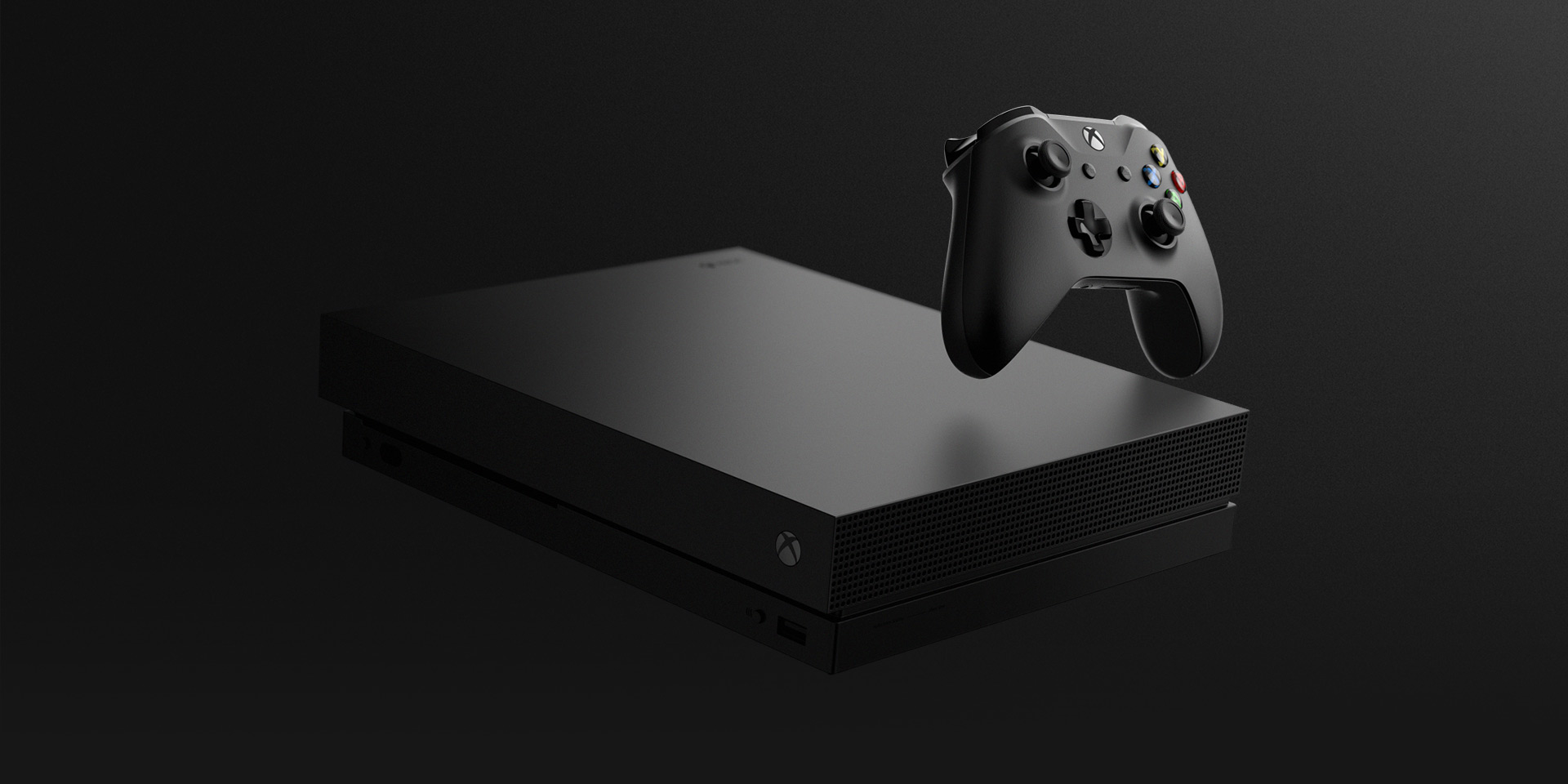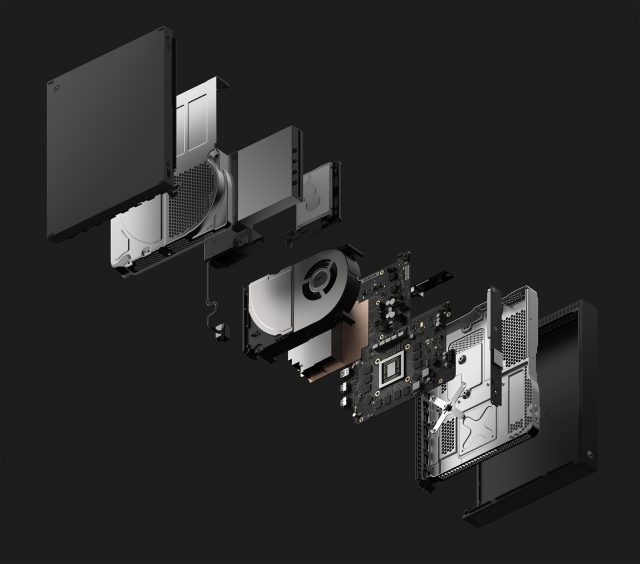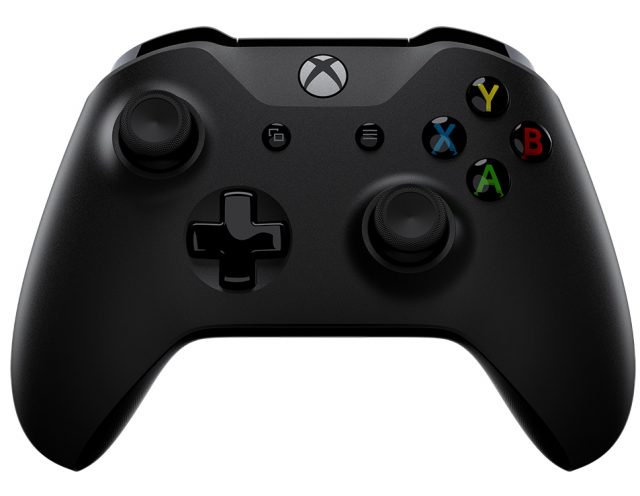When Microsoft set out to make a gaming console nearly two decades ago, they did so with the goal of not allowing Sony to win over the living room with its PlayStation. The Redmond-based company needed a way into the living room, and the original Xbox was the way to do it.
Fast forward to 2017 when we’ve had iteration after iteration of the console. There was, of course, the original Xbox, its successor, Xbox 360, along with its variants, the Xbox 360 Slim and Xbox 360E, as well as the Xbox One, released in 2012, and its successor, the Xbox One S, a slimmer, quieter, somewhat 4K-ier version of the company’s latest console offerings.
And now, we have Xbox One X.
Launching November 7th, Microsoft’s mandate for their latest console was for it to be the most powerful home console ever made, and they did this with a number of new technologies and innovations, while somehow miraculously making the console the smallest (by volume) Xbox One on the market. And yes, the power supply is built in.
Gone is the fluff of previous console generations where loading a retail box up with a bunch of game images or stuffing it full of thin paper inserts showing off titles was the way manufacturers marketed first- and third-party titles. Even the packaging of Xbox One X is designed for the true, high-end gamer; here’s a shot of the console, a few words about it, and a photo of the processor inside it. Because you’re a nerd and putting a Halo logo on the back of the box isn’t going to do anything other than take away from our otherwise perfectly manicured retail package.
Opening the box yields a trial subscription to Xbox Live Gold and Xbox Game Pass, as well as a quick start guide. Pull that out, and you’re looking at six (SIX!) teraflops of compute power shoved down a single HDMI cable. More on that in a minute.
The Xbox One X seems to take up less than a third of the actual package, flanked by two giant pieces of foam packing for protection. One side also houses a small box with a power cord, high-speed HDMI cable, and a redesigned Xbox One controller. Remember, no fluff.
Xbox One X is surprisingly heavy. It’s an insanely dense box, able to be made smaller by the vapour chamber used to cool the processor. It’s not the quietest console we’ve ever used, but even under some load, it is quieter than the Xbox One’s power supply. In standby.
The machine looks absolutely killer in a deep grey finish with matte plastic all the way around and a bit of character with a left edge that hangs over the edge of its black base. It looks a bit like an art piece crossed with a slightly off-kilter Minecraft building. It’s probably the best looking console of the current bunch, perhaps excluding the charm of the Switch if only for that clicky sound the Joy-Con make.
The new controller has a grippy texture along its rear and a much improved click response to the shoulder and face buttons. Other than this, it is the Xbox One X controller you know and love, and in case you need reminding, you can order customized version of your very own from the Xbox Design Lab.
All the beefiness of the Xbox One X’s specifications leans to one thing: this is the same Xbox One you know already, turned up to 11, and then maybe another notch after that. With virtually four times the power over Xbox One S, everything plays smoother, runs faster, has a higher framerate, and is generally improved. Load times in menus are lower, and the console runs its interface with zero stutter that we became a bit accustomed to on the original Xbox One console floating around.
If you’ve got an Xbox One already, there are a few reasons to look into an upgrade. Of course, the 4K games and movie playback are the biggest draws, as is HDR support, however even those who don’t have a 4K set yet will benefit from 1080p downsampling, whereby the console generates a 4K image and scales it down to 1080p, producing a crisper picture on the same display you’re already running. And if you happen to be right in the middle, Xbox One X will even produce native 1440p images if you’re outputting to a monitor that has that not-quite-4K-but-better-than-HD pixel count.
Xbox One X is a tough console to say no to. The price is definitely encroaching on territory that is for gaming elite, however the machine still rings in at less than half the cost of a basic 4K-capable PC, and it does so with virtually effortless setup and configuration. Transferring existing content from an already established Xbox One meant logging into Xbox Live and clicking a few install buttons, though there’s also a very simple transfer method that involves moving games from one console to the other using your home network rather than re-downloading what is likely a few hundred gigabytes of content.
Xbox One X represents Microsoft’s next step in gaming. It is actually an iterative one in which power and refinements have been the focus, but that is as it should be for an inter-generational experience. Games, controllers, and accessories that work on Xbox One and Xbox One S work exactly the same way with Xbox One X without any adapters.
Microsoft’s foray into true 4K console gaming, pushing the envelope, and innovating on what some might call a dull series of black and white boxes beneath our television screens, has opened the door into their labs to show us what the company is capable of. And the future of Xbox seems very bright.



